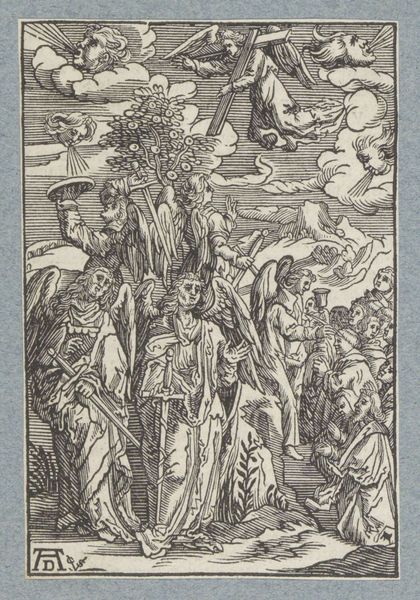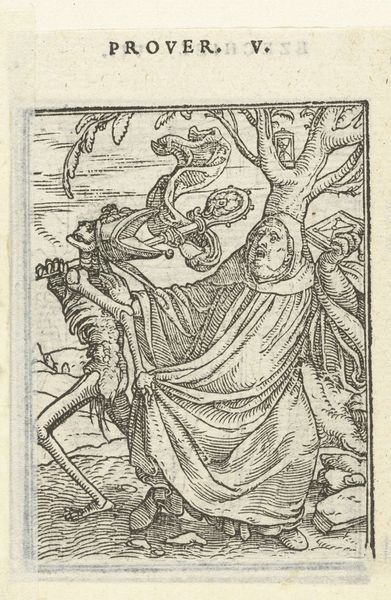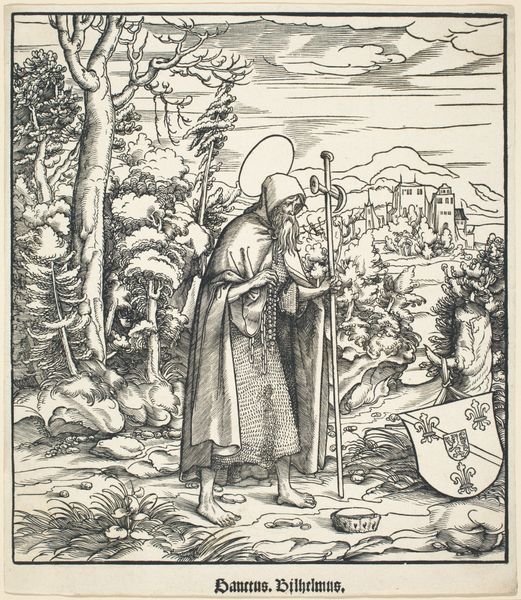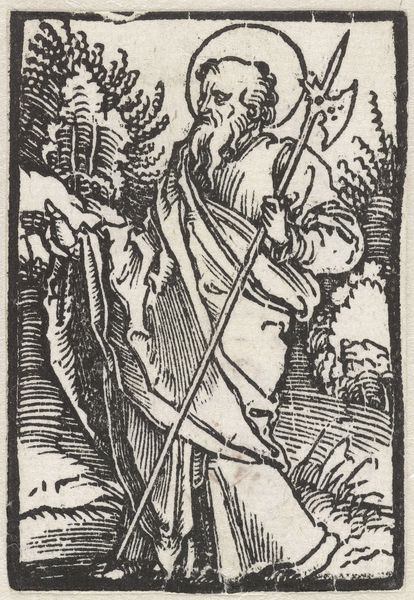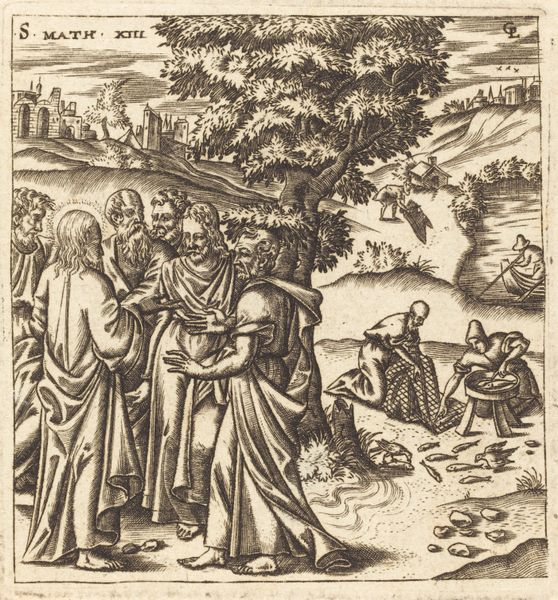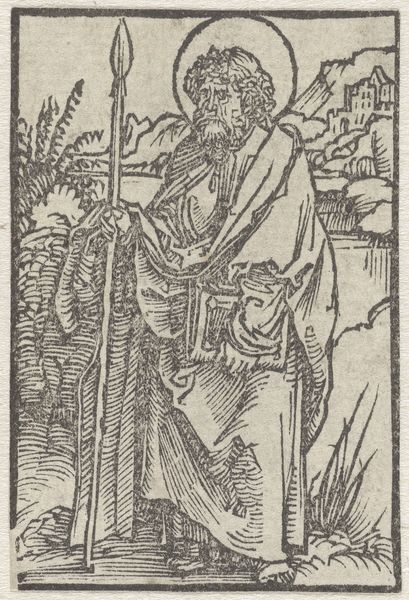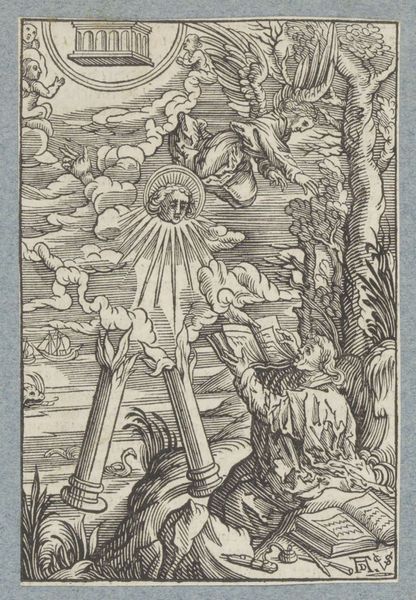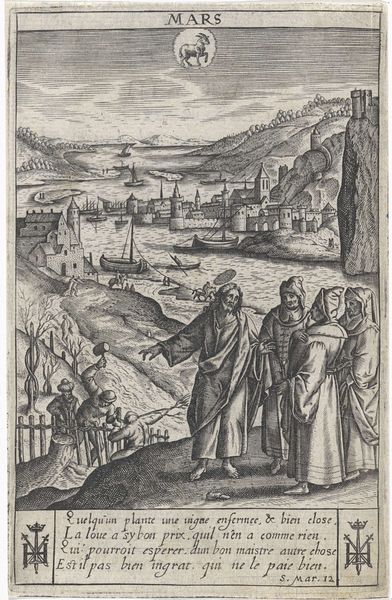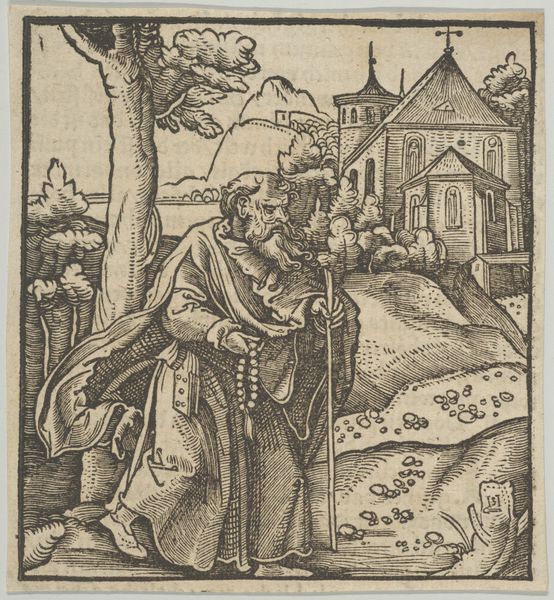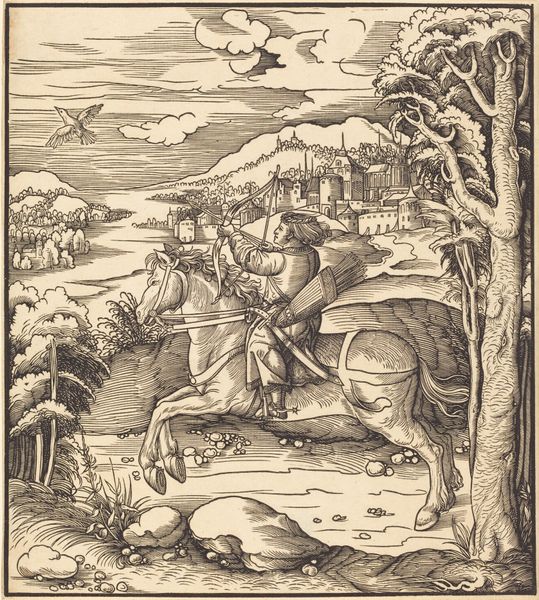
print, woodcut
#
narrative-art
# print
#
landscape
#
figuration
#
woodcut
#
northern-renaissance
Copyright: National Gallery of Art: CC0 1.0
Editor: Here we have Leonhard Beck's woodcut, Saint Walpurgis, created between 1516 and 1518. The contrast between the saint and the tumultuous sea creates an immediate tension. What social narratives do you find at play in this piece? Curator: It's important to see this image not just as a religious scene, but also as a reflection of its time. Walpurgis was known for protection against storms and disease. How might this imagery relate to the anxieties and realities of 16th-century life, perhaps regarding trade routes and health? What about the depiction of a female figure having agency and control? Editor: I didn't consider the context of trade routes and disease! I was just focusing on the visual aspects and how they make me feel now. Thinking about her agency... the male figures on the boat appear dependent on her guidance. Curator: Precisely. Think about the power dynamics embedded in the image. Walpurgis, standing firm on land with her associated coat-of-arms, counterposes male dependence at sea, in a highly patriarchal era. Do you think this imagery subtly challenges traditional gender roles? And how can this figure, and her cult-like appeal, empower a broader audience? Editor: Definitely. Seeing her as a source of strength and protection in a world riddled with uncertainties—that resonates. I guess I was missing the point entirely focusing on my experience with the artwork instead of thinking about it intersectionally. Curator: Personal responses are valid and vital! But layering historical context and thinking about identity, class, and gender gives us a far deeper understanding. Art doesn’t exist in a vacuum. Editor: I learned so much. It’s incredible how much one image can hold once you begin to unpack its context. Curator: Indeed, it reveals how art is inextricably linked to societal values and historical power dynamics.
Comments
No comments
Be the first to comment and join the conversation on the ultimate creative platform.

